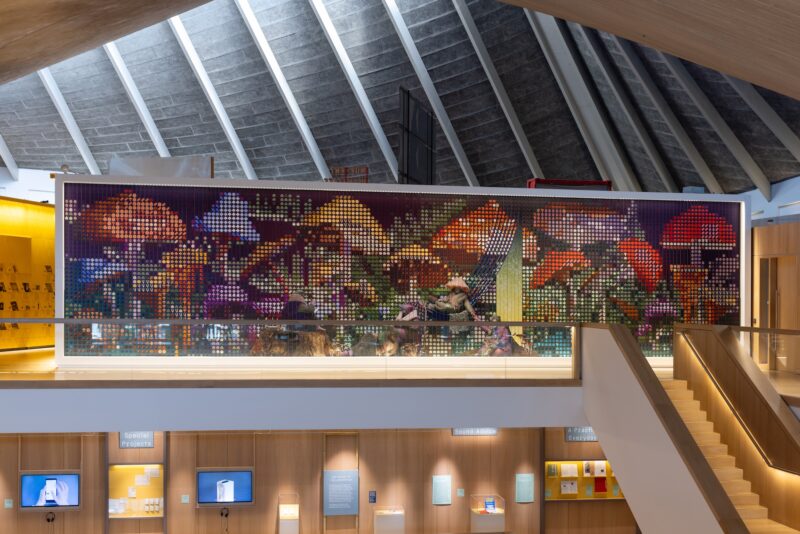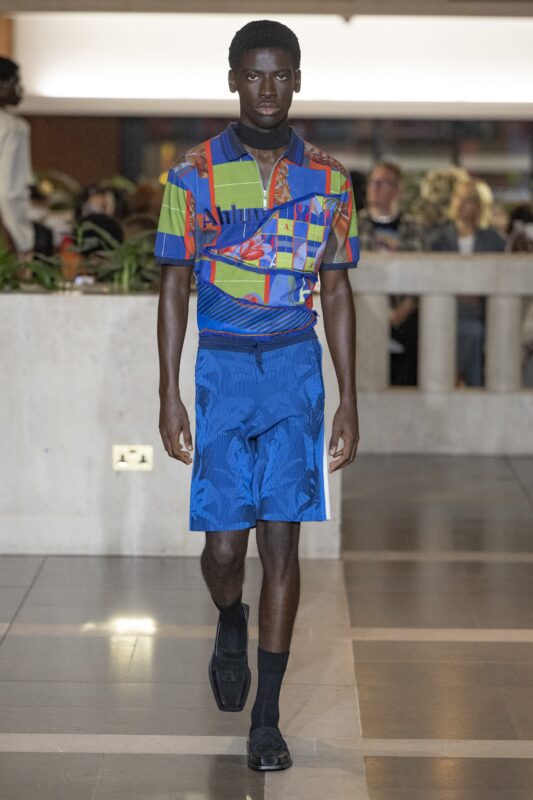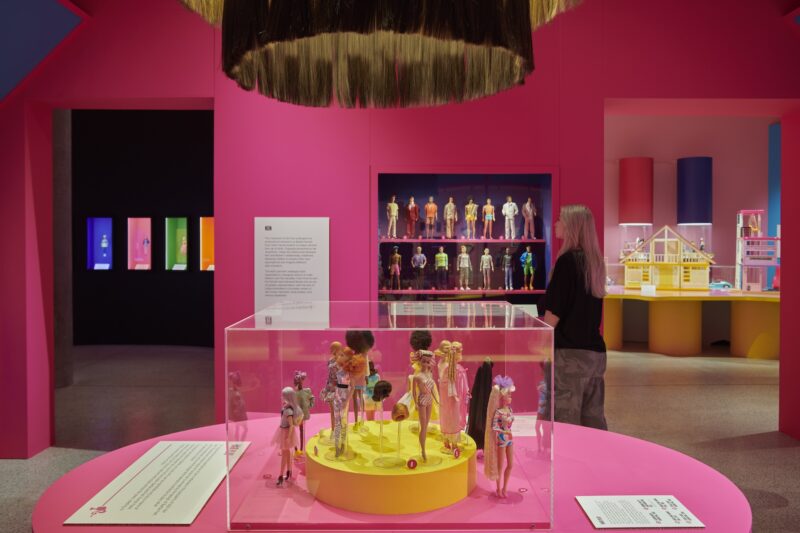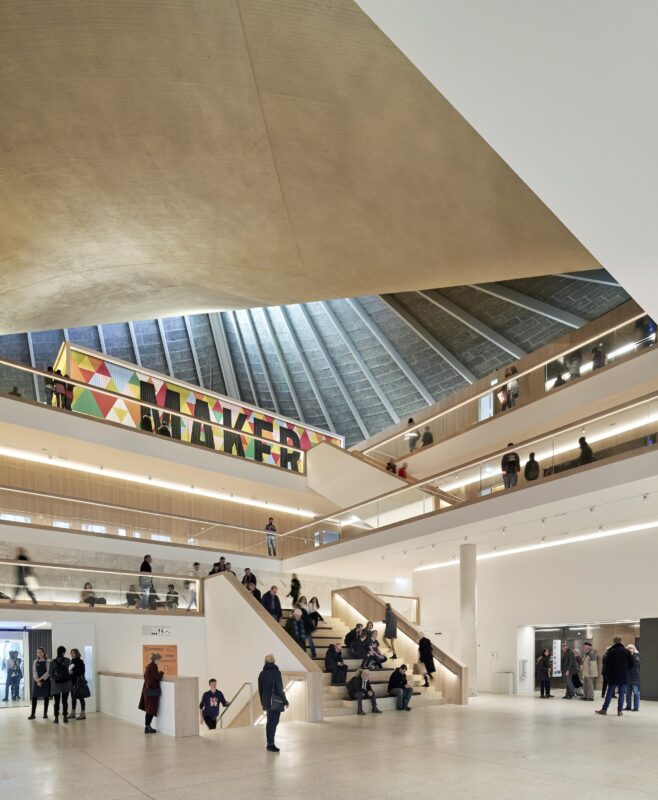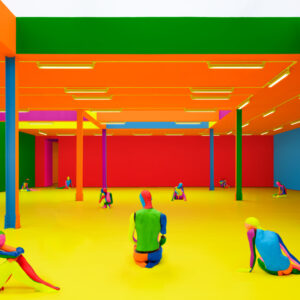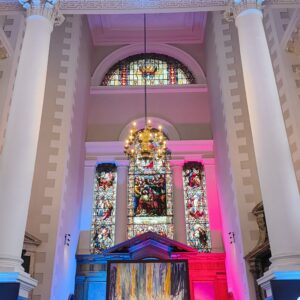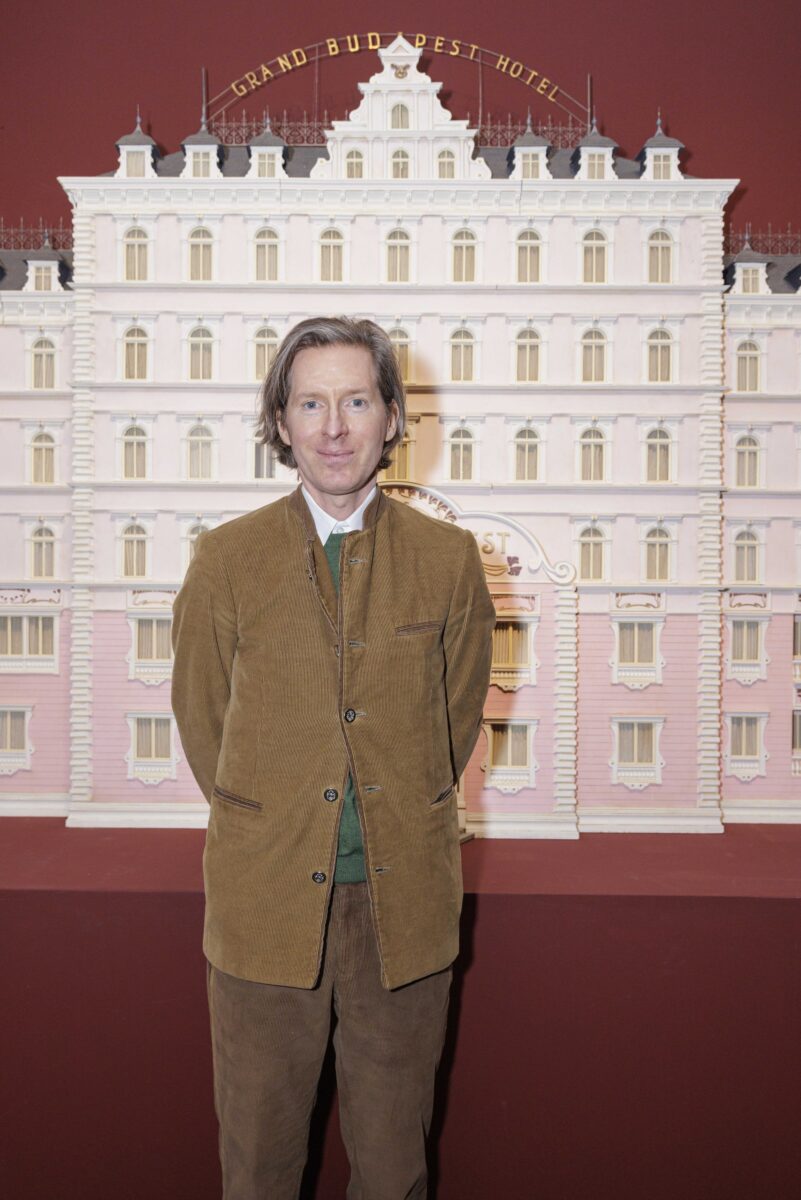
The Design Museum today announced details of the hundreds of objects from the films of Wes Anderson which will go on display in a landmark retrospective of the work of the director later this year.
The monumental candy-pink model of the Grand Budapest Hotel — that was used to capture the building’s façade for the 2014 film — will be one of the largest and most recognisable items in the exhibition, which opens at the Design Museum in London in November. Spanning over 3-metres in width, the model will be one of over 600 objects on display which will collectively illustrate Anderson’s meticulous craft of filmmaking.
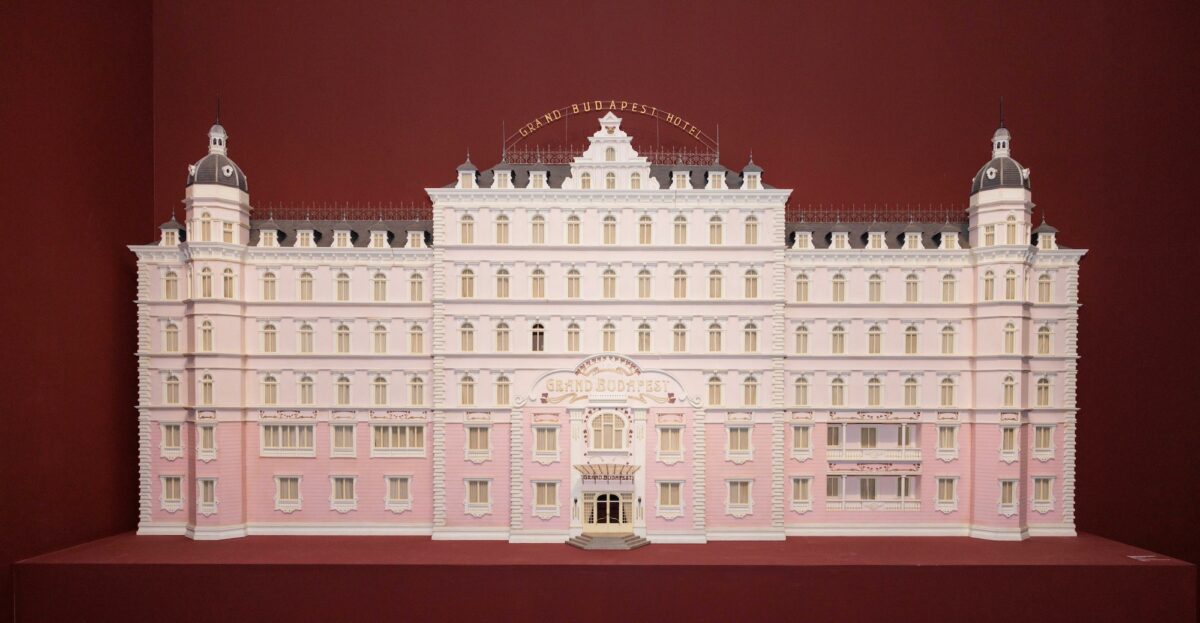
Across the exhibition, items will range from original storyboards, polaroids, sketches, and famed costumes worn by much-loved characters, to stop-motion puppets, miniature models, paintings, props and even Anderson’s handwritten notebooks.
The Design Museum has been granted unprecedented access to Wes Anderson’s extensive archives, which the filmmaker has painstakingly built up over three decades. This will be the very first time the majority of these objects have been publicly displayed in Britain.
Through these unique objects, the exhibition will chart the evolution of Anderson’s films from his first short and feature films in the 1990s, up to his most recent productions. The show will follow a broadly chronological survey of his career, with each section dedicated to one of his films. It will begin with 1996’s Bottle Rocket — Anderson’s first feature film — right up to his Oscar-winning short film The Wonderful Story of Henry Sugar (2023) from the anthology collection The Wonderful Story of Henry Sugar and Three More.
Wes Anderson: The Archives is the first major museum exhibition devoted to Wes Anderson’s extensive and distinctive cinematic output. It is a collaboration between la Cinémathèque française in Paris and the Design Museum in London — and with Wes Anderson himself.
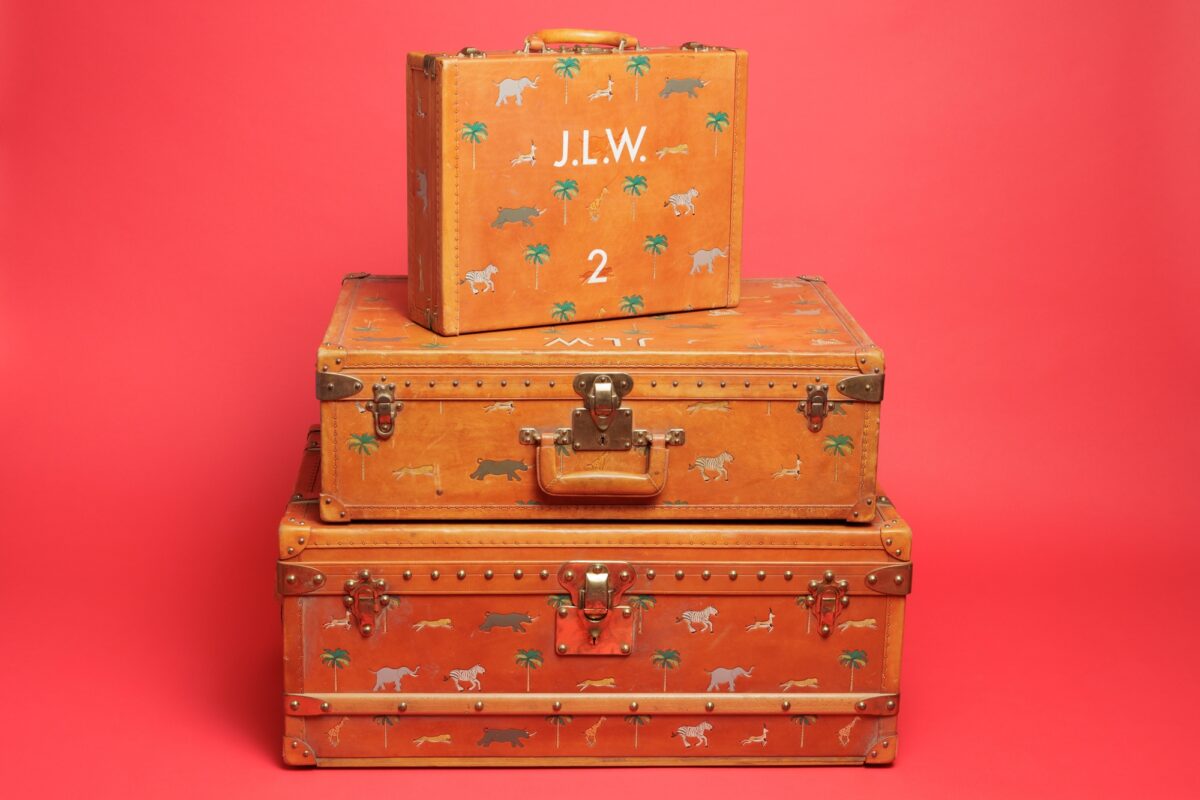
The show premiered at la Cinémathèque française in March and will be expanded and re-imagined at the Design Museum later this year. Over 100 objects will be added, and there’ll be a new emphasis on the complex process of Anderson’s world-building design work and the contributions of his trusted collaborators.
Exhibition highlights
Visitors will be able to get up-close to immediately recognisable items that have appeared on screen across all of Anderson’s films.
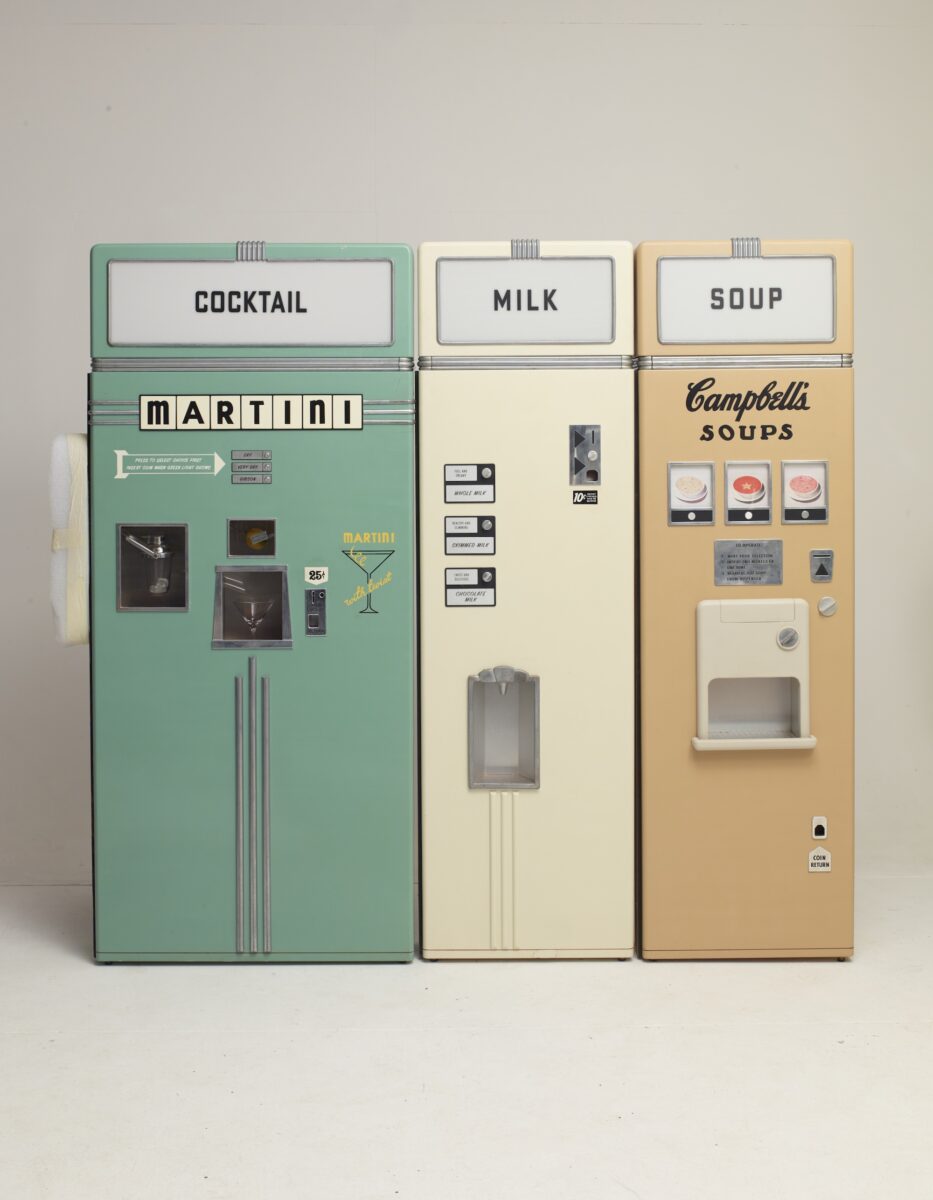
Highlights include the vending machines from Asteroid City (2023), the FENDI fur coat worn by Gwyneth Paltrow as Margot Tenenbaum in The Royal Tenenbaums (2001), and the original stop motion puppets used to depict the fantastical sea creatures in The Life Aquatic with Steve Zissou (2004).
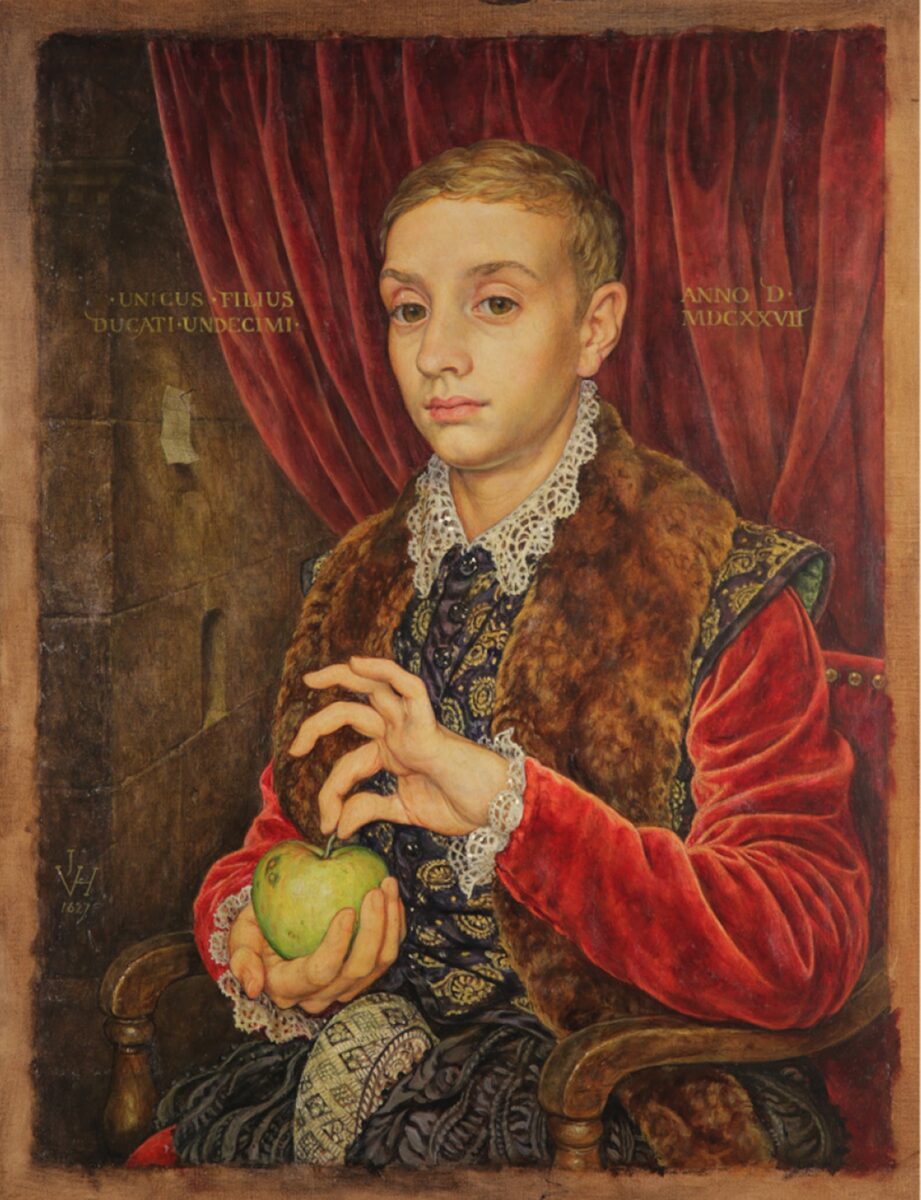
Also on display will be Boy with Apple, the ‘priceless Renaissance portrait’ that is unexpectedly inherited by Ralph Fiennes’ character Gustave H in The Grand Budapest Hotel (2014). In reality, the painting is a contemporary work by British artist Michael Taylor, and was commissioned by Wes Anderson specially for the film. The painting will be shown alongside Fiennes’ Gustave H concierge costume, as well as the coat, dress and accessories worn by Tilda Swinton’s character Madame D, the wealthy aristocrat who is the original owner of the painting in the film.
A very rare treat for Wes Anderson fans will also be the screening of Anderson’s Bottle Rocket short film that went on to be remade as his first feature. Created in 1993 and starring long-time collaborator Owen Wilson, visitors will be able to watch the whole 14-minute cut in the exhibition gallery.
A number of Anderson’s spiral-bound notebooks in which the director records ideas will also be shown. They feature a rare opportunity to uncover his creative process, from the earliest inspirations for his films and characters, to ideas for scripts and sketches of scenes in his characteristic handwriting.
Dozens of costumes will also be on display, exploring Anderson’s careful collaboration with actors to craft characters through the ensembles they wear. Highlights include the Oscar-winning costumes from The Grand Budapest Hotel (for which Milena Canonero received the Academy Award for Costume Design in 2014) and much-loved characters including Moses Rosenthaler’s costume (worn by Benicio del Toro) in The French Dispatch (2021), Max Fischer’s Rushmore Academy uniform from Rushmore, and the full ensembles of the Zissou crew from The Life Aquatic with Steve Zissou. Costumes worn by Waris Ahluwalia, Ralph Fiennes, Seu Jorge, Scarlett Johansson, Gwyneth Paltrow, Bill Murray, Jason Schwartzman, Ben Stiller, Tilda Swinton, Owen Wilson and Jeffrey Wright will all be on show.
The sections devoted to the stop motion films Fantastic Mr Fox (2009) and Isle of Dogs (2018) delve into Wes Anderson’s highly crafted miniature worlds. Visitors will discover a large selection of original puppets in various scales, including Mr Fox (voiced by George Clooney) wearing his signature corduroy suit and show dog Nutmeg (voiced by Scarlett Johansson) alongside the meticulously built miniature sets.

A major thread woven through the show is the story of the collaborative approach that makes Anderson’s work possible. On display will be works by many of these key long-standing creative partners, including Eric Chase Anderson, Javi Aznarez, Milena Canonero, Roman Coppola, Alexandre Desplat, Erica Dorn, Mark Friedberg, Andy Gent, Juman Malouf, Roger Do Minh, Sylvia Plachy, Carl Sprague, Simon Weisse and Laura Wilson.
As well as finished props and sets, the exhibition will feature work-in-progress material and maquettes, and it will look at the variety of traditional and hand-made film-making techniques that the director continues to celebrate through his work, especially connected to puppets and stop motion animation.
Wes Anderson’s archives
Anderson has kept items from his films for nearly thirty years, and he has amassed thousands of varied objects. This exhibition is the first time the archives have been displayed, with the vast majority of items having been in storage ever since they were first used on their respective film sets.
Almost uniquely as a filmmaker, Anderson builds his filmic worlds by ensuring that what is seen on screen is conceived and crafted as a ‘real’ object. Although visible only for few seconds, these are much more than mere props and Anderson himself is closely involved in the commission and creation of each one.
“Each Wes Anderson picture plunges the viewer into a world with its own codes, motifs, references, and with sumptuous and instantly recognisable sets and costumes. Every single object in a Wes Anderson film is very personal to him — they are not simply props, they are fully formed pieces of art and design that make his inventive worlds come to life.”
Lucia Savi, Head of Curatorial and Interpretation at the Design Museum and co-curator of Wes Anderson: The Archives
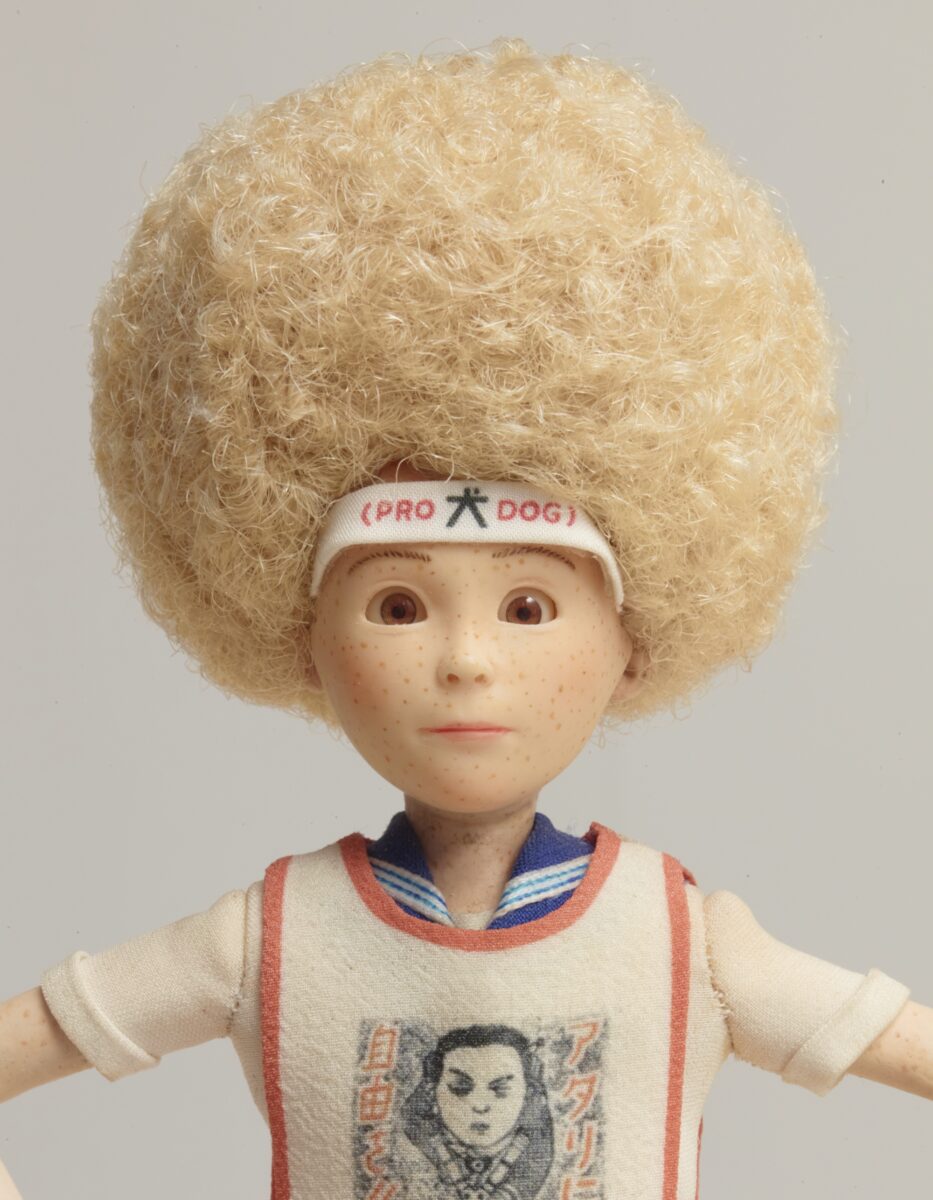
“It is an absolute gift that even as a young film-maker Wes Anderson had the vision and foresight to save all his props and beautifully crafted objects for his own archive. We are thrilled to be the first to fully dive into the archive’s full riches.”
Johanna Agerman Ross, Chief Curator at the Design Museum and co-curator of Wes Anderson: The Archives
The exhibition is curated by Johanna Agerman Ross and Lucia Savi, based on an original concept curated by Matthieu Orléan. Developed in collaboration with Octavia Peissel and Ben Adler.
Wes Anderson: The Archives 21st November 2025 – 26th July 2026, the Design Museum
Tickets for the exhibition have gone on sale today.
The exhibition is accompanied by an extensive new catalogue, published by the Design Museum and produced in collaboration with Wes Anderson. It features essays by leading design and film writers, unique photography, and interviews with some of Anderson’s collaborators, such as actors Owen Wilson, Scarlett Johansson, Jason Schwartzman and Tilda Swinton; composer Alexandre Desplat, musician Seu Jorge and music supervisor Randall Poster.
Anderson’s meticulous collecting of these items began when he realised that everything that had been made for Bottle Rocket was owned and then sold off by the film’s production company. So, from his second feature film — Rushmore — he personally took care of every item after shooting concluded, ensuring he was the guardian of all items crafted for each movie.
The book — Wes Anderson: The Archives — is available now in French, and is published in English later this year.
The exhibition — Wes Anderson: The Archives — is produced by the Design Museum, London in collaboration with la Cinémathèque franc?aise and in partnership with Wes Anderson and American Empirical Pictures.
